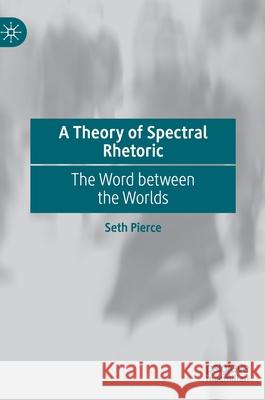A Theory of Spectral Rhetoric: The Word Between the Worlds » książka
topmenu
A Theory of Spectral Rhetoric: The Word Between the Worlds
ISBN-13: 9783030696788 / Angielski / Twarda / 2021 / 170 str.
Kategorie:
Kategorie BISAC:
Wydawca:
Palgrave MacMillan
Język:
Angielski
ISBN-13:
9783030696788
Rok wydania:
2021
Wydanie:
2021
Ilość stron:
170
Waga:
0.39 kg
Wymiary:
21.01 x 14.81 x 1.27
Oprawa:
Twarda
Wolumenów:
01
Dodatkowe informacje:
Wydanie ilustrowane











